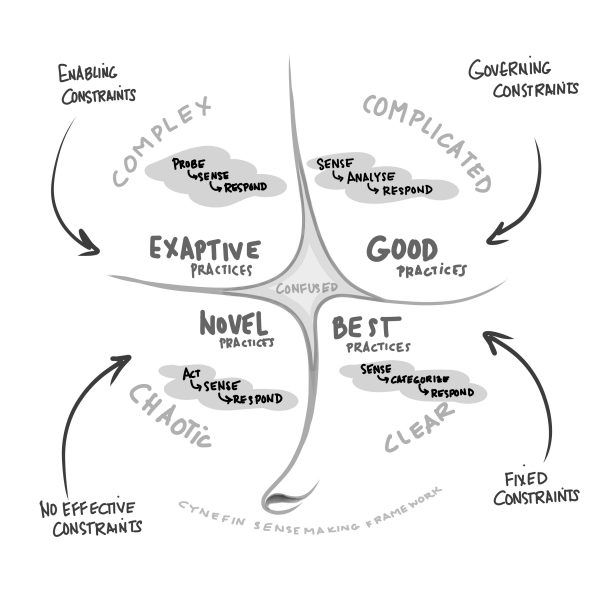
Over the years I have been defining and championing Adaptive organisations, one question get raised over and over again - aren’t these just Agile organisations? This article outlines why they are not, indeed why Agile is just not sufficient for flexible organisations.
Despite being a very early adopter of Agile, and many years as an Agile coach is some of the largest Agile transformations in the world, there are a few reasons why I believe Agile doesn’t work well for an entire organisation.
Let’s start with the simplest issue with Agile organisations. I know many Agile specialists will be rolling their eyes with this one and calling me pedantic, but Agile is defined in the context of software in both the manifesto and supporting principles.
In numerous training courses I have created and/or delivered I explain that any technique, practice or framework is Agile if it adheres to the manifesto and principles of Agile. Like many others I have created innovation processes for clients based on Agile, and presented the manifesto on a slide with the line “working software over comprehensive documentation” altered to refer to ‘product’ rather than ‘software’. This works for innovation as it and software development are both design activities, but I don’t claim that the innovation process is Agile - it may be ‘based on’ or ‘inspired by’ - because it does not adhere to the manifesto or principles.
I don’t know why Agile has not had its definition expanded to allow other design activities to be included, but it hasn’t. Therefore, strictly speaking, if you are not doing software you are not doing Agile.
Agile manifesto, principles, frameworks and practices are mainly concerned with delivery of product. They don’t spend much time dealing with the broader aspects of organisations such as career structures, reward, vision or business models.
As mentioned before, Agile is brilliant for the uncertainty of design-type work. The Cynefin framework, by Dave Snowden, defines five decision-making contexts - Complex, Complicated, Chaotic, Clear and Confused.
 The Cynefin Framework
The Cynefin Framework
The Cynefin Framework www.cognitive-edge.com
Agile works best in Complex situations, but most organisations will also have work that is Complicated, Clear and even some Chaotic where non-Agile approaches may be more effective.
If an organisation wants to be able to handle work of different types, then it needs to deploy more approaches than only Agile.
By having a definition, Agile obviously excludes practices that don’t align to that definition - but what if those practices would be really useful? Surely it can’t be good to exclude beneficial practices simply because they don’t align to a definition? On the other hand, if Agile includes everything then it loses all meaning and is simply the buzz word in marketing material that it is already in danger of becoming.
Adaptive Organisations sense their environment and change their operating model to thrive in that environment; as the environment changes, the organisation changes to meet the new opportunities and challenges.
In volatile times it will be beneficial to exploit economies of flex, in more stable times it will be better to exploit economies of efficiency. Adaptive organisations are not tied to a particular way of generating value, to one delivery model; they are concerned in ensuring they are using the best delivery model, an appropriate business model, maintain a meaningful purpose, have empowered people and an effective sensing process appropriate to their environment.
Adaptive provides the framework inquisitive and flexible mindset, that creates a home for various delivery models as needed. Agile may be one of those delivery models.
Adaptive focuses on: